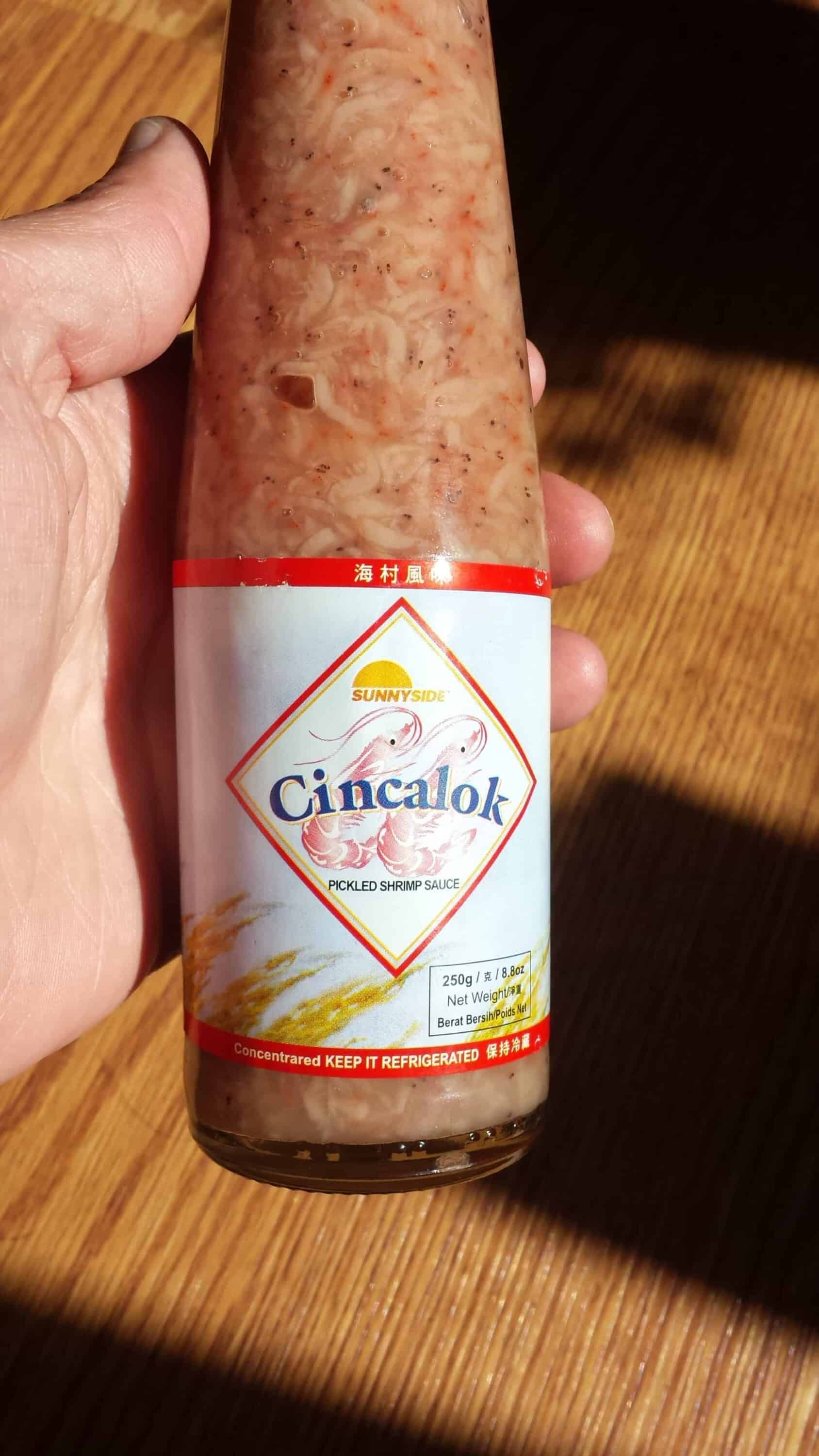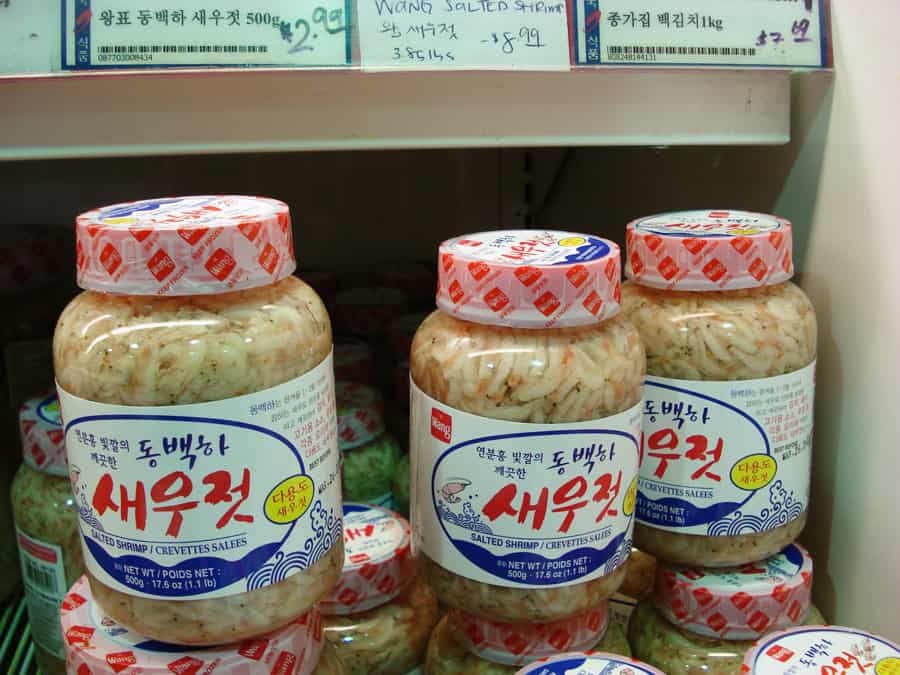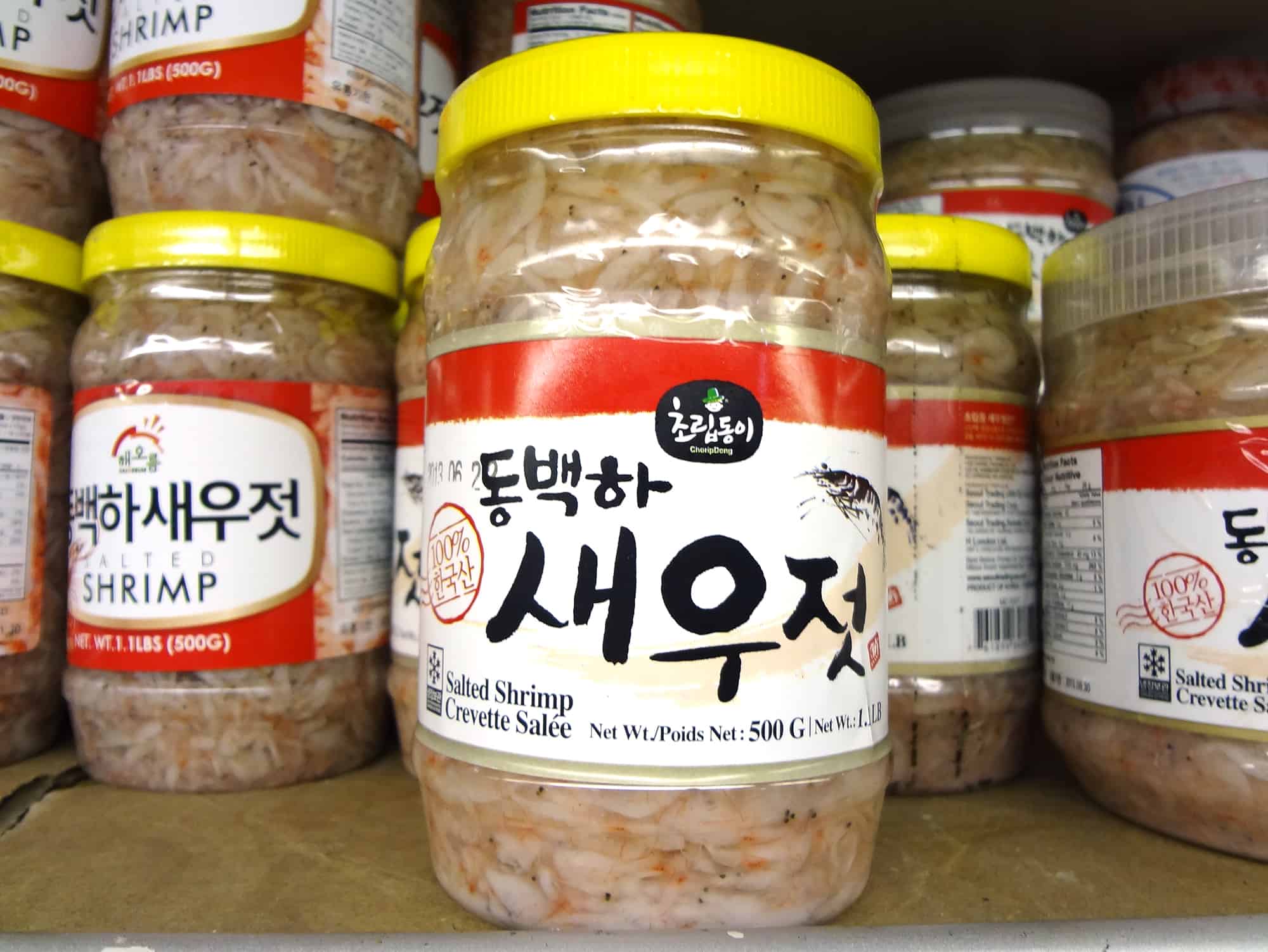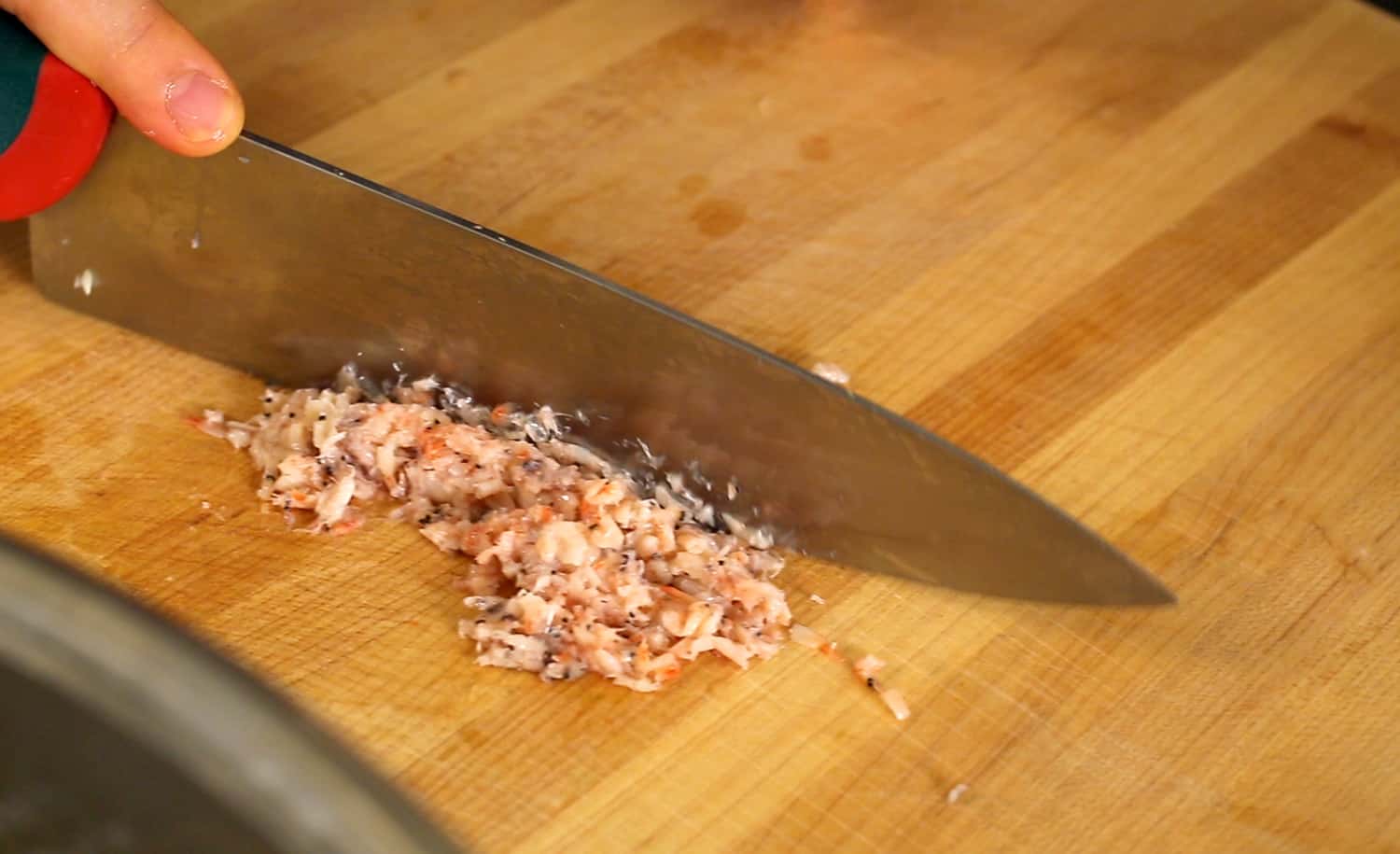
Saeujeot Korea's delicious salted, fermented shrimp paste YouTube
Combine the water and the sweet rice flour in a small pot. Mix well with a wooden spoon and let it cook over medium heat for about 10 minutes until it starts to bubble. Add the sugar and cook 1 more minute, stirring. Remove from the heat and let it cool off completely. Pour cooled porridge into a large mixing bowl.

Topic Alternative to Fermented salted Shrimp Cooking Korean food
Saeujeot (salted fermented shrimps closeup) It is a popular Jeotgal 젓갈 (Salted Seafood) which is how it gets its name - Saeu 새우 (Shrimp) and Jeot 젓 for Jeotgal. This ingredient is often used as a salty seasoning in Korean cooking in addition to salt or in lieu of it. It is also used as a condiment - especially when eating pork.

How to use Korean Style Salted Shrimp (salt substitute) YouTube
If you are allergic to seafood or avoiding shrimp because you are vegan or vegetarian, red miso is an excellent substitute for salted shrimp. Red miso is made with fermented soybeans, barley, and other grains; its color ranges from dark brown to red, making it perfect for kimchi. Furthermore, red miso paste contains glutamic acid, the same.

Salted fermented shrimp (Saeujeot) Korean cooking ingredients
Korean recipes made with fermented salted shrimp. Squash & beef over rice. Hobak-sogogi-deopbap

Topic Alternative to Fermented salted Shrimp Cooking Korean food
Scoop out the fermented shrimp from the jar. Add the minced scallions and garlic with the sesame oil. Stir together. Shake in some sesame seeds and pepper flakes, and give the sauce another stir. Serve in little dishes for your bo ssam or jokbal! *Bunny Wisdom* You can find the salted fermented shrimp in many Asian supermarkets.

Saltfermented Fallcatch small Shrimp Hyosong Green Food co.,ltd
Store the brine water in another bowl. 3. Take garlic, ginger, fish sauce, and chili flakes into a food processor and blend them into a paste. It'll use as the paste to coat kimchi. 4. Now, cut the large onions, radish, carrot, any other vegetables into 2 inches. Now, take 3-4 spoons of salted shrimp saeujeot. 5.

Salted fermented shrimp (Saeujeot) Maangchi’s Korean cooking ingredients
Shrimp paste or shrimp sauce (xiā jiàng, 虾酱) is made from crushed or ground shrimp. Like fish sauce, it is salted and fermented. The flavor is similar to fish sauce, except it is quite a bit stronger and, well…shrimpier. It can come in different forms, from liquid sauces and thicker pastes to solid, dried blocks, depending on which.

Salted fermented shrimp (Saeujeot) Maangchi’s Korean cooking ingredients
Saeujeot 새우젓. A variety of salted and fermented seafood (jeotgal) is used in Korean cuisine, and salted fermented shrimp is a common and versatile ingredient. It has a deep flavor, so it's used to season many Korean dishes in place of salt. Many Koreans include salted fermented shrimp in their kimchi paste when making kimchi.

Salted fermented shrimps stock image. Image of seafood 65060523
Fermented shrimp is also a key but almost hidden ingredient in Thai curry paste, where it's used in small quantities along with ingredients like chile, lemongrass, galangal, and chopped cilantro.

Here are some easy to find substitutes for salted shrimp that you must
Pour this cooled paste into a large bowl. Add the garlic, ginger, onion, fish sauce, fermented salted shrimp and hot pepper flakes. Mix well with the wooden spoon until the mixture turns into a thin paste. Add the radish, carrot and green onion, as well as the scallion and the minari.

Salted fermented shrimp (Saeujeot) Korean cooking ingredients
What is Saeujeot? Saeujeot, Saeujot, or Saeu-jeot (새우젓), also known as Korean salted shrimp, is a traditional fermented food product made by preserving shrimp in salt. The shrimp used for making saeu-jeot are called jeot-saeu (젓새우) and they belong to the genus Acetes. They are smaller and have thinner shells than ordinary shrimp.

Salted Shrimp & The Raucous Good Festival They Deserve
Salted shrimps or Saeujeot 새우젓 is a type of Jeotgal that is made by salting and fermenting tiny shrimps. It used in Korean cuisine as a way to add a salty umami note to the dish. It's an important ingredient in kimchi but is also added to various side dishes, dipping sauces and stews. The shrimp are very small in comparison to typical ones.

Traditional napa cabbage kimchi recipe
Salted fermented shrimp (saeujeot) & fish sauce. First of all, what is saeujeot? Saeujeot, also known as salted fermented shrimp, is a brine of tiny salty shrimps. This condiment is a popular Korean substitute for salt in soups, stews, and kimchi, it adds natural umami and the salt needed in dishes.

Cincaluk( salted fermented shrimp ),Malaysia Dr Shrimp Cincaluk price
This Korean dipping sauce with salted shrimp has a very nice flavor profile that is unique yet delicious! The deep flavor within helps bring out the flavor from cooked meat, especially Korean Bossam! Give this homemade sauce a try; It's salty, sweet, tangy with a kick from the gochugaru. Prep Time 10 mins. Cuisine: Korean.

Salted Shrimp & The Raucous Good Festival They Deserve
Salted shrimp, called "saewujeot" in Korean, is usually used in making kimchi. It can be used for flavoring in other dishes too. It is just salted and fermented small shrimp. You can buy them in a Korean or Asian grocery store. Read more from Wikipedia…. Use: Seasoning. Storage: Keep in the refrigerator.
400g@p21268.jpg)
Misori Salted Shrimp (Saeujeot) 400g from Buy Asian Food 4U
To make the paste, put the fish sauce, dried bori shrimp, garlic, salted shrimp, quartered onion, ginger and apple in a blender and process until smooth. Transfer the blended mixture to your third.